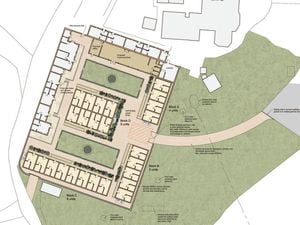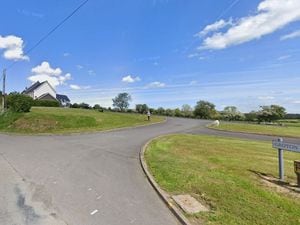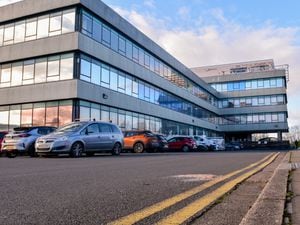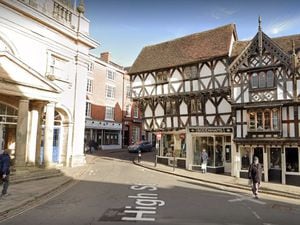Church spotlight: St Mary's Church in Kinnerley
The Rev Helen Morby says visitors to St Mary's Church in Kinnerley invariably make the same observations when they see it for the first time.
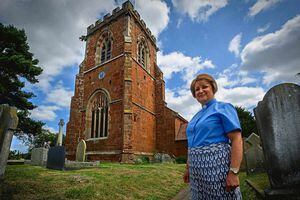
"They say it's light and it's warm, and it's got quite a welcoming feel to it," she says.
And hundreds of people were welcomed last weekend as the church hosted its annual summer festival.
On the Friday night the church hosted a talent show, where a variety of different performers entertained people from the village. There was also a flower show at the church on the Saturday and Sunday, and around 80 people attended a Songs of Praise concert on the Sunday.
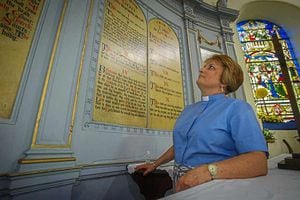
Helen, who took over at the parish just south of Oswestry in 2012, says the one thing that has struck her has been the strong sense of community.
"I think there is a real community spirit, people are very caring towards one another.
"The church building is in a very good state of repair, and that is to a large part down to the work of the community."
While the church is comparatively small – it has a capacity of around 120, and the weekly congregation is around 30 – she says it is at the heart of life in the village.
"A lot of people in the village have a link with the church in one way or another," says the 53-year-old mother-of-two.
"The congregation is very close-knit, but at the same time also very welcoming to new members. When you have got a small congregation, they soon notice if somebody new comes along, and they will make them feel welcome."
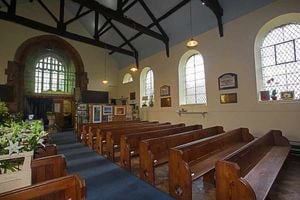
Established: circa 1185.
Capacity: 120 seated.
The church has two chalices dated 1575 and 1607. The older one is still used at every celebration of Holy Communion.
A monument on the north wall of the chancel commemorates John Bridgeman, the well-known Bishop of Chester during the reigns of James I and Charles I.
In the churchyard stands the remains of the churchyard cross. The date is most probably 15th century.[/breakout]
The church is open throughout the day, and Helen says there is a steady stream of visitors who come in to look around, with several coming from abroad.
"We get visitors from Australia, America and Canada," she says. "Some people come because they have got family buried in the churchyard, some are just passing and they like to look in churches, some like to know a bit about the history, and others are just looking for somewhere peaceful to sit."
As with many ancient sites of worship, the origins of St Mary's are uncertain.
Kinnerley Church was the Mother Church of all the churches south of Oswestry. Archdeacon of Salop, the Ven Paul Thomas, suggests Kinnerley Church was an evangelical centre as early as the sixth century.
What is known is that Kinnerley Church built the church at Knockin as a daughter or mission church in the 12th century.
It is thought that the church probably began life as a chapel to Kinnerley Castle during the 1180s or early 1190s.
Of the present church only the lower two thirds of the tower remain of the original building, with the remainder having been constructed in 1773 to 1774 at a cost of £639.
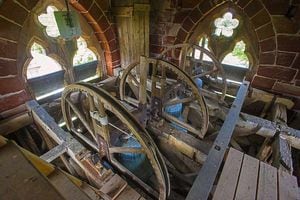
The lower tower is typical of mediaeval perpendicular architecture and may safely be dated to the late 14th or early 15th century. An interesting feature of the original structure is a profusion of "mason marks" made by the monumental masons who built the church, which can now be seen in the vestry. It appears that the vestige of the old tower was originally to have been demolished with the rest of the building, but thankfully it was retained.
Concerns about the condition of the old church were expressed in 1768, when it was written that "a frame of timber was made to support ye arch of ye church". The new church, designed by Thomas Farnolls Pritchard – better known as the architect of the Iron Bridge – opened for services on July 17, 1774.
The tower was restored in 1862 by the Rev EWO Bridgeman, who also donated the octagonal font now in the church. Mr Bridgeman had discarded the old medieval font, but when it was about to be broken up, it was rescued by the Dovaston family from West Felton. By a stroke of good luck the old font was recovered in 1966 and can now be seen in the churchyard.
One interesting fact is that of the church's three bells, the first two are considered much superior in tone to the third. Legend has it that while these two bells were being recast, a farmer stopped to watch the work on his way home from Shrewsbury cattle fair, where he had sold two cows named Dobbin and Golden. He was asked what he would give towards the cost of re-casting the bells, and put the silver coins he had received for his cattle into the furnace. The two bells were thereafter called Dobbin and Golden, and the silver alloy in the bell metal reputedly produced a sweeter tone.

